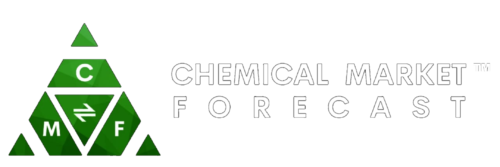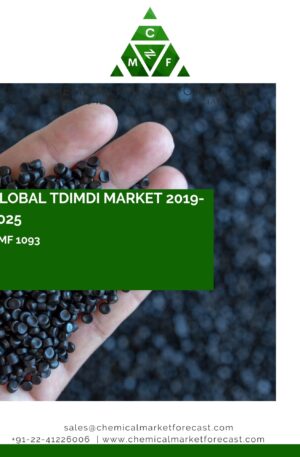Global Cement Market
Green cement, also known as sustainable cement, is a type of cement that reduces carbon emissions by using eco-friendly materials and techniques in its production. The global cement industry is one of the largest contributors to greenhouse gas emissions, with cement production accounting for approximately 8% of the world’s carbon dioxide emissions. Green cement aims to reduce these emissions by using alternative materials and technologies that reduce the carbon footprint of cement production.
The green cement market is growing rapidly due to increasing environmental concerns, rising demand for sustainable construction materials, and government regulations promoting sustainable practices. The major factors driving the growth of the green cement market include increasing demand for sustainable construction materials, rising awareness about the environmental impact of traditional cement, and government initiatives promoting sustainable practices. The construction industry is a major consumer of cement, and the growing demand for sustainable buildings and infrastructure is driving the demand for green cement.
Green cement is produced using alternative materials such as fly ash, slag, and recycled aggregates, which have a lower carbon footprint than traditional cement. These materials are either waste products from other industries or are obtained through recycling. In addition, green cement production techniques such as the use of alternative fuels and carbon capture and storage (CCS) further reduce carbon emissions.
Green cement is a type of cement that aims to reduce the environmental impact of traditional cement manufacturing. However, like any other material, it also has its drawbacks. Some of the drawbacks of green cement are: Cost: Green cement is often more expensive to produce than traditional cement, which can make it less accessible to some consumers and limit its use in construction projects. Availability: Green cement is not yet widely available in all parts of the world, which can limit its use in certain regions. Strength: Green cement may not be as strong as traditional cement, which could limit its use in certain construction projects that require high strength. Durability: The long-term durability of green cement has not yet been fully evaluated, so it is uncertain how it will perform over time. Production: The production of green cement requires the use of alternative materials and manufacturing processes, which can have their own environmental impacts and require additional resources. Carbon capture: Some types of green cement require the capture and storage of carbon dioxide emissions, which is still a developing technology and may not be widely available or cost-effective. Resistance to chemicals: Some types of green cement may be less resistant to certain chemicals and may not be suitable for certain applications, such as in chemical plants or wastewater treatment facilities.
There are several key suppliers of green cement in the market, each offering their unique solutions to reduce the environmental impact of cement production. Some of the major players in the green cement industry include CEMEX, LafargeHolcim, and HeidelbergCement. These companies are investing heavily in research and development to produce cement that emits fewer greenhouse gases, requires less energy to produce, and uses recycled materials. Other notable suppliers of green cement include CarbonCure Technologies, which uses CO2 to produce stronger concrete, and Solidia Technologies, which uses a low-carbon cement binder and a carbon-curing process. Additionally, several smaller companies are emerging in the market with innovative solutions, such as Biomason, which uses bacteria to grow cement-like materials. With the increasing demand for sustainable building materials, the green cement industry is expected to grow in the coming years, and these key suppliers will play a critical role in shaping the industry’s future.
TABLE OF CONTENT
Global Cement Market Report
1 Market Introduction of Global Cement Market Report
2 Market Segmentation of Cement Market Report
2.1 Cement Market Segmentation By Region
2.2 Cement Market Segmentation By Type
2.3 Cement Market Segmentation By Crop Type
3 Cost Structure of Global Cement Market Report
4 Country Analysis of Global Cement Market Report
4.1 China
4.1.1 Cement Market Size in China
4.1.2 Cement Market Trends & Analysis in China
4.1.3 Key Cement companies in China
4.1.4 Regulatory Framework of Cement Market in China
4.2 Germany
4.2.1 Membrane Market Size in Germany
4.2.2 Cement Market Trends & Analysis in Germany
4.2.3 Key Cement companies in Germany
4.2.4 Regulatory Framework of Cement Market in Germany
4.3 France
4.3.1 Cement Market Size in France
4.3.2 Cement Market Trends & Analysis in France
4.3.3 Key Cement companies in France
4.3.4 Regulatory Framework of Cement Market in France
4.4 Italy
4.4.1 Cement Market Size in Italy
4.4.2 Cement Market Trends & Analysis in Italy
4.4.3 Key Cement companies in Italy
4.4.4 Regulatory Framework of Cement Market in Italy
4.5 Netherland
4.5.1 Cement Market Size in Netherland
4.5.2 Cement Market Trends & Analysis in Netherland
4.5.3 Key Cement companies in Netherland
4.5.4 Regulatory Framework of Cement Market in Netherland
4.6 Russia
4.6.1 Cement Market Size in Russia
4.6.2 Cement Market Trends & Analysis in Russia
4.6.3 Key Cement companies in Russia
4.6.4 Regulatory Framework of Cement Market in Russia
4.7 Canada
4.7.1 Cement Market Size in Canada
4.7.2 Cement Market Trends & Analysis in Canada
4.7.3 Key Cement companies in Canada
4.7.4 Regulatory Cement of Membrane Market in Canada
4.8 Mexico
4.8.1 Cement Market Size in Mexico
4.8.2 Cement Market Trends & Analysis in Mexico
4.8.3 Key Cement companies in Mexico
4.8.4 Regulatory Framework of Cement Market in Mexico
4.9 Singapore
4.9.1 Cement Market Size in Singapore
4.9.2 Cement Market Trends & Analysis in Singapore
4.9.3 Key Cement companies in Singapore
4.9.4 Regulatory Framework of Cement Market in Singapore
4.10 United Kingdom
4.10.1 Cement Market Size in United Kingdom
4.10.2 Cement Market Trends & Analysis in United Kingdom
4.10.3 Key Cement companies in United Kingdom
4.10.4 Regulatory Framework of Cement Market in United Kingdom
4.11 Switzerland
4.11.1 Market Size in Switzerland
4.11.2 Market Trends & Analysis in Switzerland
4.11.3 Key Cement companies in Switzerland
4.11.4 Regulatory Framework of Cement Market in Switzerland
4.12 Brazil
4.12.1 Market Size in Brazil
4.12.2 Market Trends & Analysis in Brazil
4.12.3 Key Cement companies in Brazil
4.12.4 Regulatory Framework of Cement Market in Brazil
4.13 USA
4.13.1 Market Size in US
4.13.2 Market Trends & Analysis in US
4.13.3 Key Cement companies in US
4.13.4 Regulatory Framework of Cement Market in US
4.14 Japan
4.14.1 Market Size in Japan
4.14.2 Market Trends & Analysis in Japan
4.14.3 Key Cement companies in Japan
4.14.4 Regulatory Framework of Cement Market in Japan
4.15 South Korea
4.15.1 Market Size in South Korea
4.15.2 Market Trends & Analysis in South Korea
4.15.3 Key Cement companies in South Korea
4.15.4 Regulatory Framework of Cement Market in South Korea
4.16 India
4.16.1 Market Size in India
4.16.2 Market Trends & Analysis in India
4.16.3 Key Cement companies in India
4.16.4 Regulatory Framework of Cement Market in India
4.17 Thailand
4.17.1 Market Size in Thailand
4.17.2 Market Trends & Analysis in Thailand
4.17.3 Key Cement companies in Thailand
4.17.4 Regulatory Framework of Cement Market in Thailand
4.18 Russia
4.18.1 Market Size in Russia
4.18.2 Market Trends & Analysis in Russia
4.18.3 Key Cement companies in Russia
4.18.4 Regulatory Framework of Cement Market in Russia
4.19 Malaysia
4.19.1 Market Size in Malaysia
4.19.2 Market Trends & Analysis in Malaysia
4.19.3 Key Cement companies in Malaysia
4.19.4 Regulatory Framework of Cement Market in Malaysia
4.20 Saudi Arabia
4.20.1 Market Size in Saudi Arabia
4.20.2 Market Trends & Analysis in Saudi Arabia
4.20.3 Key Cement companies in Saudi Arabia
4.20.4 Regulatory Framework of Cement Market in Saudi Arabia
5 Cement Market Trends
5.1 Cement Market Trends- Key Drivers
5.2 Cement Market Trends- Key Restraints
5.3 Cement Market Trends- Key Challenges
5.4 Porter’s Five Forces Analysis of Cement Market
5.5 PEST Analysis- Cement Market
6 Cement Market Forecast
6.1 Cement Market Forecast By Region
6.1.1 North America
6.1.2 Europe
6.1.3 APAC
6.1.4 Middle East
6.1.5 ROW
6.2 Cement Market Forecast By Type
6.2.1 Fertilizer
6.2.2 Pesticide
6.3 Cement Market Forecast By Crop Type
6.3.1 Fruits & Vegetables
6.3.2 Oilseed and Pulses
6.3.3 Cereals & Grains
6.3.4 Other
7 Supply Chain of the Cement Market Analysis
8 Opportunity Analysis
9 Scenario Analysis
10 Key Company Profiles
11 Strategic Conclusions – Cement Market Report
12 Abbreviations used in Cement Market Report






Reviews
There are no reviews yet.